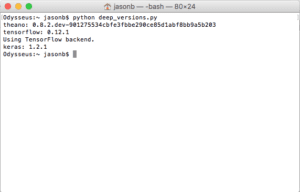
- ANACONDA NAVIGATOR TUTORIAL HOW TO
- ANACONDA NAVIGATOR TUTORIAL INSTALL
- ANACONDA NAVIGATOR TUTORIAL DOWNLOAD
ANACONDA NAVIGATOR TUTORIAL INSTALL
Installation of Scipy using pip on Windowsįirst, we are going to install the Scipy on Windows using the Python package manager 'pip' that helps in modifying the existing packages, installing packages, and removing unnecessary packages.
ANACONDA NAVIGATOR TUTORIAL DOWNLOAD
Here we will install the Scipy on the two systems Windows and Linux by following the below steps.īefore installing Scipy make sure that Python is already installed on your system, If you want to install then visit our another tutorial “Python download and Installation steps (Windows 10/Unix/Mac/Ubuntu/CentOS )”. There is the concept of arrays in Numpy, It can build a multidimensional array of objects that contains the same kind of data.ĭifference between Scipy and Numpy Installation of Scipy

It is a function-based library, so here there is no concept of an array. The base language of Numpy is C, so it has faster computational speed. Scipy is written in Python, so it has a slower speed with huge functionality. It does basic operations like indexing, sorting, etc. It performs complex operations like numerical algorithms and algebraic functions. It has different kinds of functions with fewer details. It has different kinds of functions with very details. The difference between Scipy and Numpy is given below. The Scipy and Numpy are very essential libraries with a huge and wide range of functions or methods in Python.

It can perform many different kinds of Scientific computation and deal with different Scientific problems. The Scipy contains the optimized functions that are used in Data Science and other engineering domains and it is an extension of Numpy. Read: Tensorflow in Python Why we use Scipy in Python It can integrate with many different environments and has a huge collection of sub-package for scientific domains. The high-level commands and classes provide an easy way for data manipulation and visualization. The Scipy is written languages C, C++, Fortran and Python. The Scipy is the extension of Numpy (Numerical Python), the data processing is extremely fast and efficient.

It has a built-in mathematical function and libraries that can be used in science and engineering to resolve different kinds of problems.Īlso, It has built-in algorithms for optimization, eigenvalue problems, differential equations, integration, interpolation, algebraic equations, statistics, etc. The Scipy (Scientific Python) is an open-source library that helps in the computation of complex mathematical or scientific problems. If you aren’t sure which Python version you want to install, choose Python 3. Go to the Anaconda Website (/products/individual) and choose a Python 3.x graphical installer (A) or a Python 2.x graphical installer (B).In fact, an installation of Anaconda is also the recommended way to install Jupyter Notebooks. Conda even makes it easy to switch between Python 2 and 3. This is highly advantageous as you don’t have to manage dependencies between multiple packages yourself. If you need additional packages after installing Anaconda, you can use Anaconda’s package manager, conda, or pip to install those packages. This is advantageous as when you are working on a data science project, you will find that you need many different packages (numpy, scikit-learn, scipy, pandas to name a few), which an installation of Anaconda comes preinstalled with.
ANACONDA NAVIGATOR TUTORIAL HOW TO
This tutorial will demonstrate how to install Anaconda,on Microsoft Windows.Īnaconda is a package manager, an environment manager, and Python distribution that contains a collection of many open source packages.


 0 kommentar(er)
0 kommentar(er)
